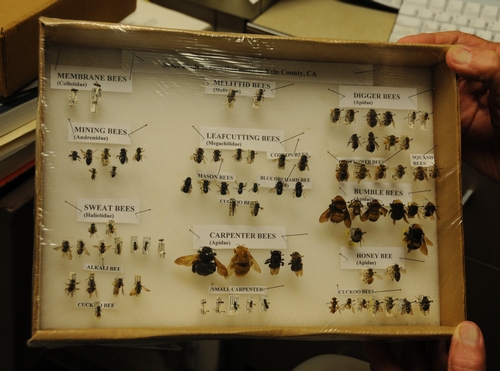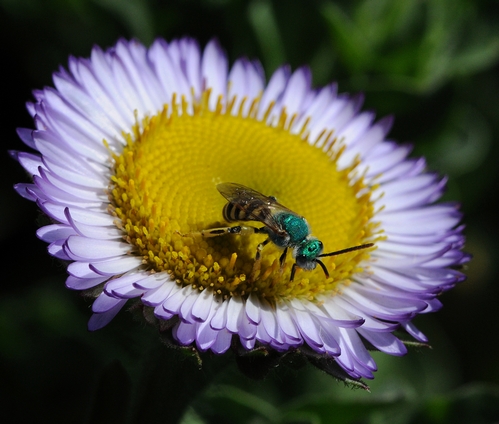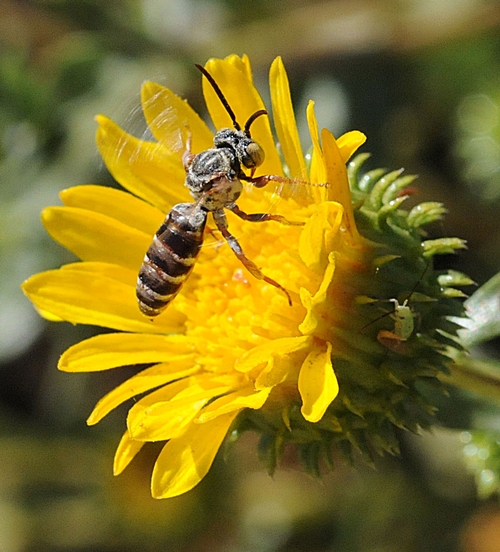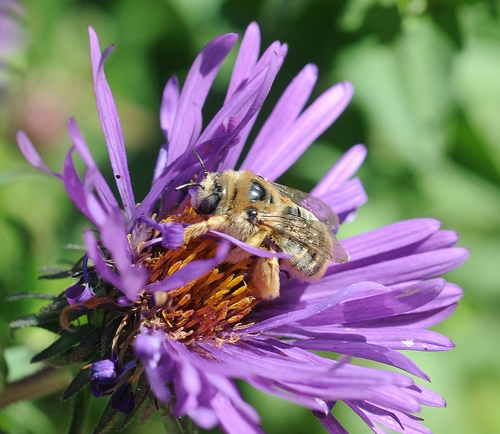Folks accustomed to seeing only honey bees (which are non-natives) buzzing around their yard probably aren't aware that in the United States alone there are some 4000 identified species of native bees.
And they probably aren't aware of The Bee Course.
That's a workshop offered for conservation biologists, pollination ecologists and other biologists who want to gain greater knowledge of the systematics and biology of bees. It's held annually in Portal, Ariz. in the Chiricahua Mountains at the Southwest Research Station of the American Museum of Natural History (AMNH). This year's dates are Aug. 22-Sept. 1.
Native pollinator specialist Robbin Thorp, emeritus professor of entomology at the University of California, Davis, and active in the Xerces Society, has taught at The Bee Course since 2002.
The course, led by Jerry Rozen of AMNH, has been operating continuously since 1999, Thorp said, and UC Davis graduates are very much involved. Steve Buchmann who received his Ph.D. at UC Davis in 1978, is one of the instructors. Ron McGinley who received his undergraduate degree at UC Davis, does most of the initial student contact and scheduling for the course, Thorp said.
"There are usually about eight instructors and 22 participants for the 10- day course," Thorp said. "Most of the time is spent in the lab identifying bees to genus. At least three days are spent in the field so students can see various bees doing their thing, collect them and bring them back to the lab to ID them. It is a great experience for students to interact with instructors and especially with their peers from round the world."
"Instructors all donate their time to teach in the course, but benefit from the chance to get together with colleagues and a new cohort of interesting students each year. Every class is different--that is, it takes on its own personality--and each student brings something new and different to the mix."
More locally, Thorp will speak Sunday, March 7 on the amazing diversity of native bees at the 2010 Bee Symposium, sponsored by the Santa Rosa-based Partners for Sustainable Pollination (PFSP). He'll discuss their nesting habits and nest site requirements. The symposium takes place from 9 a.m. to 5 p.m. in the Subud Center, 234 Hutchins Ave., Sebastopol.
The fourth annual conference will offer updates and new perspectives on honey bees and native pollinators, according to PFSP executive director Kathy Kellison.
It's good to see the focus on native bees as well as honey bees. For more information on native bees, be sure to check out the Xerces Society Web site and UC Berkeley's Native Bee Gardens.
Attached Images:

Yolo County Bee Collection

Metallic Green Sweat Bee

Cuckoo Bee

Sunflower Bee

Carpenter Bee